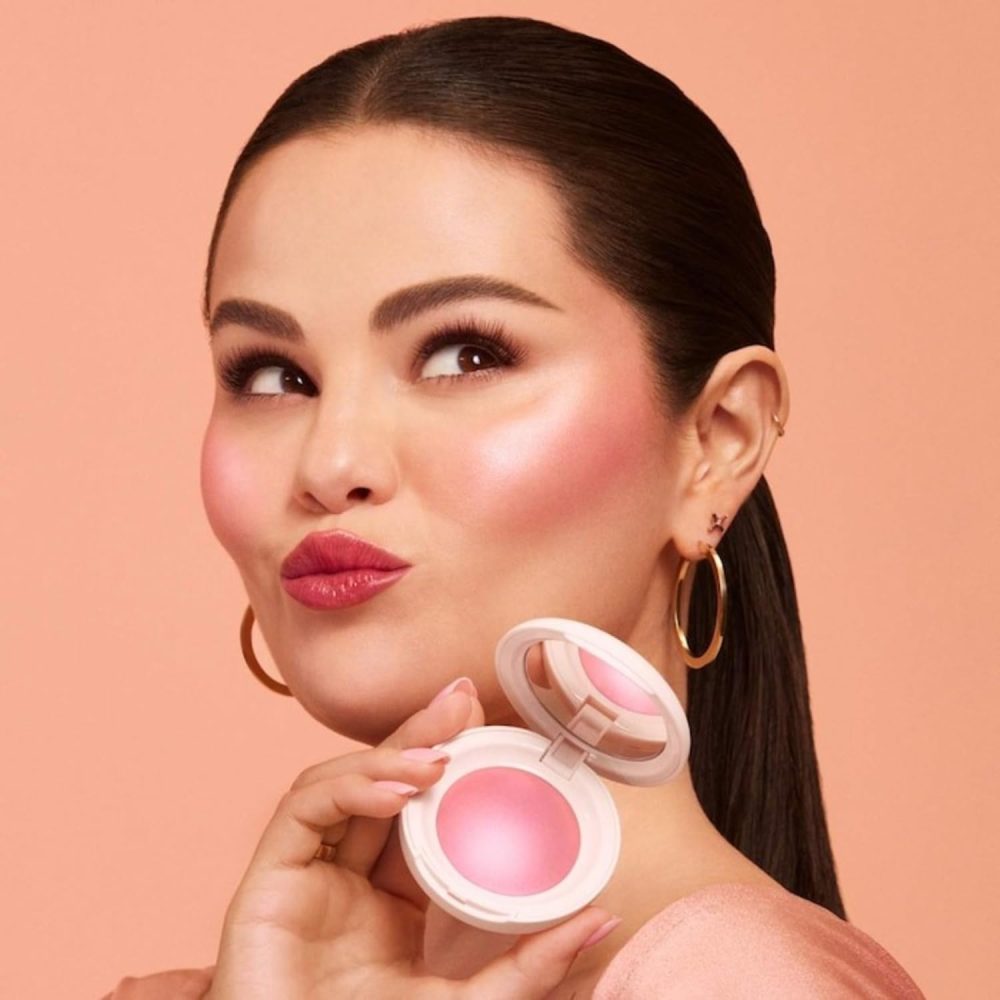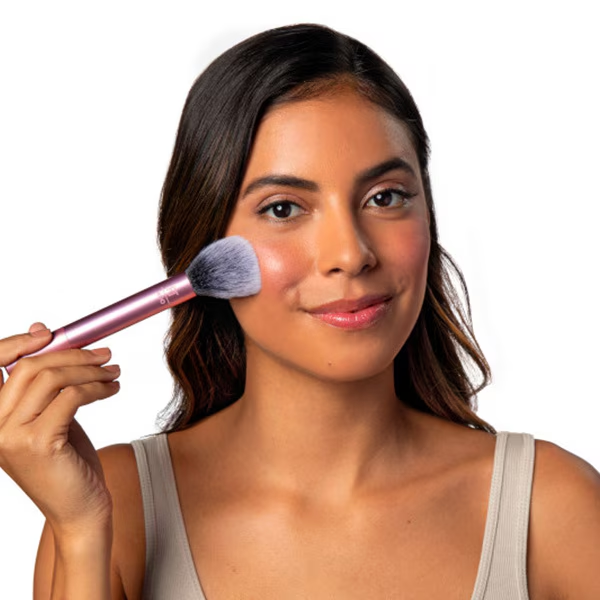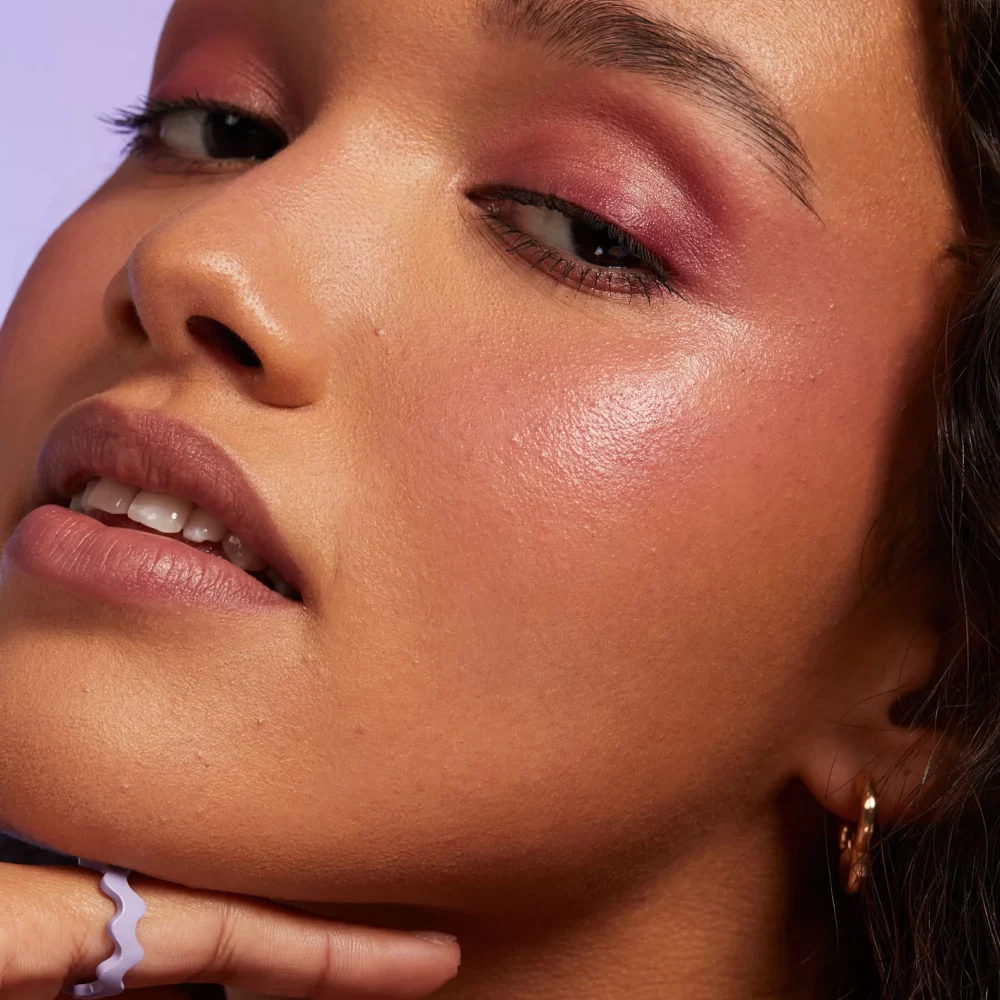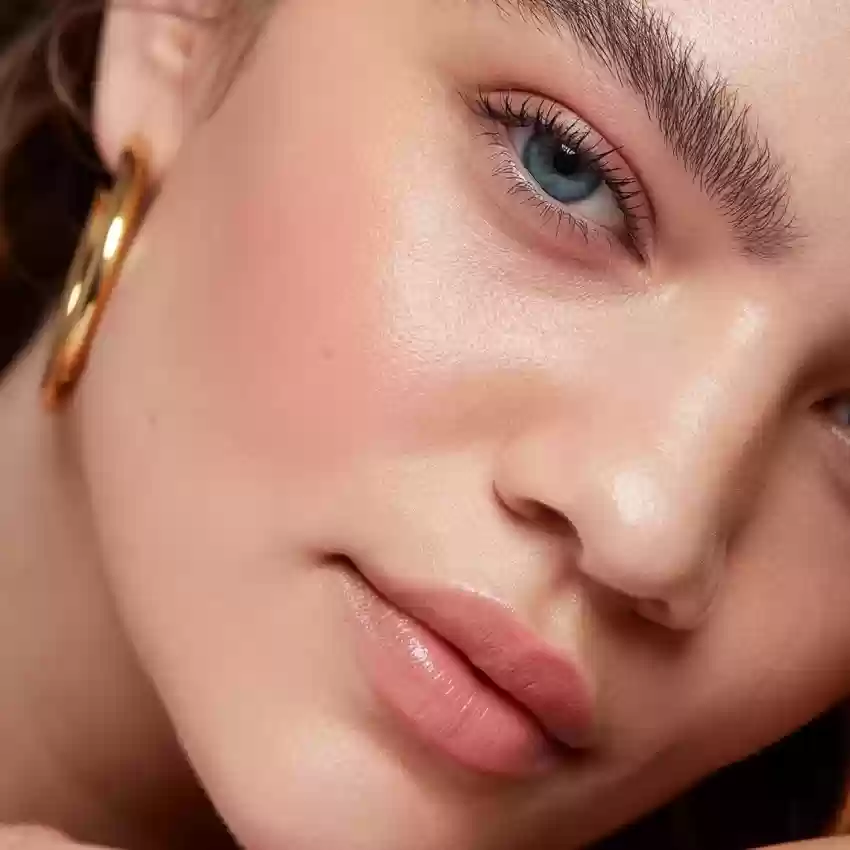Introduction: The Power of Blush
Contents
- 1 Introduction: The Power of Blush
- 2 Understanding Blush Formulas: Powder, Cream, and Liquid
- 3 Choosing the Right Blush Color for Your Skin Tone
- 4 Mastering Blush Application Techniques
- 5 Blush Placement for Different Face Shapes
- 6 Blush and Contouring: Creating Dimension
- 7 Blush for Different Makeup Looks: From Natural to Glam
- 8 Blush Application Tools and Techniques
- 9 Common Blush Mistakes and How to Avoid Them
- 10 Blush Trends and Innovations
Blush stands as one of the most transformative elements in any makeup routine. This versatile cosmetic product breathes life into the complexion, creating a healthy, youthful glow that can instantly elevate any look. From subtle peachy hues to bold berry tones, blush offers a wide spectrum of colors to complement various skin tones and makeup styles. When applied correctly, blush can sculpt the face, add dimension, and create the illusion of a natural flush. Furthermore, it serves as a crucial bridge between eye makeup and lip color, tying the entire look together seamlessly. Whether aiming for a barely-there nude makeup look or a glamorous evening ensemble, the right blush application technique can make all the difference. This guide will explore the world of blush, covering everything from choosing the right formula to mastering application techniques for different face shapes.
Understanding Blush Formulas: Powder, Cream, and Liquid
Blush comes in various formulas, each offering unique benefits and application techniques. Powder blush, the most traditional form, provides excellent color payoff and blendability. It works well for oily skin types and offers long-lasting wear. Cream blush, on the other hand, imparts a dewy, natural-looking flush that melts into the skin. This formula suits dry or mature skin, creating a youthful, radiant appearance. Liquid blush, the newest innovation in the category, offers a lightweight, buildable color that can be easily blended for a seamless finish. Additionally, some brands offer hybrid formulas that combine the benefits of different textures. For instance, cream-to-powder blushes start creamy but set to a powdery finish, offering the best of both worlds. When choosing a blush formula, consider your skin type, desired finish, and the rest of your makeup routine. Powder blushes work well over foundation and setting powder, while cream and liquid formulas can be applied directly to bare skin or over light coverage foundation for a more natural look.

Choosing the Right Blush Color for Your Skin Tone
Selecting the perfect blush shade can significantly enhance your overall makeup look. For fair skin tones, light pink, peach, or soft coral shades create a natural-looking flush without overwhelming the complexion. Medium skin tones can explore a wider range of colors, from rosy pinks to warm terracotta hues. Deep skin tones shine with rich berry shades, vibrant corals, or deep plums that add warmth and dimension to the face. As a general rule, choosing a blush color that mimics your natural flush will create the most authentic look. To find this shade, gently pinch your cheeks and observe the color that appears. Another approach involves considering your undertones. Cool undertones pair well with pink-based blushes, while warm undertones complement peach or coral shades. For neutral undertones, both cool and warm blush colors can work beautifully. Experimenting with different shades and observing how they interact with your skin tone in various lighting conditions can help you discover your perfect blush match.
Mastering Blush Application Techniques
Applying blush correctly can enhance facial features and create a youthful, healthy appearance. The traditional technique involves smiling to locate the apples of the cheeks and applying blush in a circular motion. However, modern approaches offer more nuanced applications tailored to different face shapes and desired effects. For a lifting effect, start at the highest point of the cheekbone and blend upwards towards the temples. This technique works particularly well for mature skin or those wanting to create a more sculpted look. For a natural, sun-kissed appearance, sweep blush across the cheekbones and lightly over the bridge of the nose. This mimics the way the sun naturally hits the face. When using cream or liquid blush, start with a small amount and build up the color gradually. Use fingertips or a stippling brush to pat and blend the product into the skin for a seamless finish. For powder blush, use a fluffy brush to apply the product in light, sweeping motions. Remember to blend thoroughly to avoid harsh lines and create a natural-looking flush.

Blush Placement for Different Face Shapes
Tailoring blush placement to your face shape can enhance your natural features and create a balanced appearance. For round faces, apply blush slightly below the apples of the cheeks and blend upward towards the temples. This creates the illusion of length and definition. Oval faces can follow the traditional application on the apples of the cheeks for a classic look. Those with square faces should focus on softening angular features by applying blush in a circular motion on the apples of the cheeks. Heart-shaped faces benefit from blush applied to the outer edges of the cheekbones, blended towards the center of the face to balance wider foreheads. For long faces, apply blush horizontally across the apples of the cheeks to create the illusion of width. Diamond-shaped faces should concentrate blush on the highest points of the cheekbones to accentuate their natural bone structure. Regardless of face shape, always blend the edges of the blush thoroughly to create a natural, diffused look. Experiment with different placements to find what works best for your unique features.
Blush and Contouring: Creating Dimension
Blush and contouring work hand in hand to sculpt and define the face. While contour creates shadows to define bone structure, blush adds color and life to the complexion. To combine these techniques effectively, start by applying contour under the cheekbones, along the jawline, and around the temples. Then, layer blush slightly above the contour on the cheekbones, blending well to avoid any harsh lines. This technique creates a natural transition between the shadow of the contour and the flush of the blush. For a more subtle approach, use a neutral blush shade as a soft contour, applying it slightly lower on the cheeks than traditional blush placement. This creates definition without the stark contrast of traditional contouring. Alternatively, try the “draping” technique, where blush is applied from the cheekbones up to the temples and even onto the eyelids for a monochromatic, sculpted look. Remember to choose complementary shades for your contour and blush to create a harmonious, natural-looking result.

Blush for Different Makeup Looks: From Natural to Glam
Blush plays a crucial role in various makeup looks, from barely-there natural styles to bold, glamorous ensembles. For a no-makeup makeup look, opt for a cream or liquid blush in a soft, natural shade that closely matches your skin’s natural flush. Apply sparingly to the apples of the cheeks and blend thoroughly for a subtle, fresh-faced appearance. In everyday makeup, a powder blush in a complementary shade can add a healthy glow and tie the look together. For evening or glamorous makeup, don’t be afraid to go bolder with blush. Vibrant colors and shimmery finishes can create a stunning, high-impact look. Layer different blush shades to create depth and dimension, or try the “blush draping” technique for a modern, editorial-inspired appearance. When working with bold eye or lip makeup, adjust your blush application accordingly. With smoky eyes or a bold lip, keep the blush subtle and neutral to balance the look. For neutral eye makeup, a pop of brighter blush can serve as the focal point of the face.
Blush Application Tools and Techniques
The right tools can make a significant difference in blush application. For powder blushes, a fluffy, angled brush allows for precise application and easy blending. Duo-fiber brushes work well with both powder and cream formulas, creating an airbrushed effect. When using cream or liquid blushes, fingertips provide warmth that helps the product meld seamlessly with the skin. Alternatively, a dense stippling brush can create a beautiful, diffused finish with cream products. For a more precise application, especially when contouring with blush, a smaller, tapered brush offers greater control. When applying blush, use light, sweeping motions for powder formulas and patting or stippling motions for cream and liquid products. Always start with a small amount of product and build up gradually to avoid over-application. To blend blush seamlessly, use a clean brush or beauty sponge to soften any harsh edges. For a natural-looking glow, try applying blush with a damp beauty sponge, which sheers out the color and creates a dewy finish.

Common Blush Mistakes and How to Avoid Them
While blush can beautifully enhance the complexion, certain mistakes can detract from its benefits. One common error is over-applying blush, resulting in an unnatural, clown-like appearance. To avoid this, start with a small amount of product and build up gradually. Another mistake is choosing the wrong shade for your skin tone, which can clash with your natural coloring. Always test blush shades in natural lighting before purchasing. Incorrect placement is also a frequent issue, such as applying blush too low on the cheeks, which can drag the face down. Ensure proper placement by feeling for your cheekbone and applying blush slightly above it. Failing to blend properly can result in harsh, unnatural-looking lines. Take the time to thoroughly blend the edges of your blush for a seamless finish. Additionally, neglecting to adjust blush application based on the rest of your makeup can lead to an unbalanced look. Consider your entire makeup ensemble when choosing and applying blush. Lastly, forgetting to set cream or liquid blush can result in fading or smudging throughout the day. A light dusting of translucent powder can help lock the color in place.
Blush Trends and Innovations
The world of blush makeup continues to evolve, with new trends and innovations emerging regularly. One recent trend is “sunburn blush,” which mimics a sun-kissed glow by applying blush across the cheeks and nose. Another popular technique is “euphoric blush,” inspired by the TV show Euphoria, which involves bold, graphic blush placements in vibrant colors. In terms of product innovations, multi-use cheek and lip tints have gained popularity for their versatility and natural finish. Some brands have introduced blush sticks or crayons for easy, on-the-go application. Customizable blush palettes allow users to mix and match shades for a personalized color. Blush formulas infused with skincare ingredients, such as hyaluronic acid or vitamin C, offer cosmetic and skincare benefits in one product. As sustainability becomes increasingly important in the beauty industry, many brands are developing refillable blush compacts or packaging made from recycled materials. These trends and innovations reflect the ongoing evolution of blush makeup, offering exciting new ways to enhance and express individual beauty.
